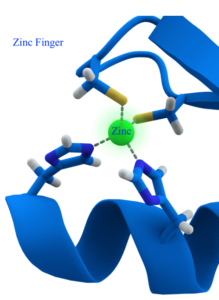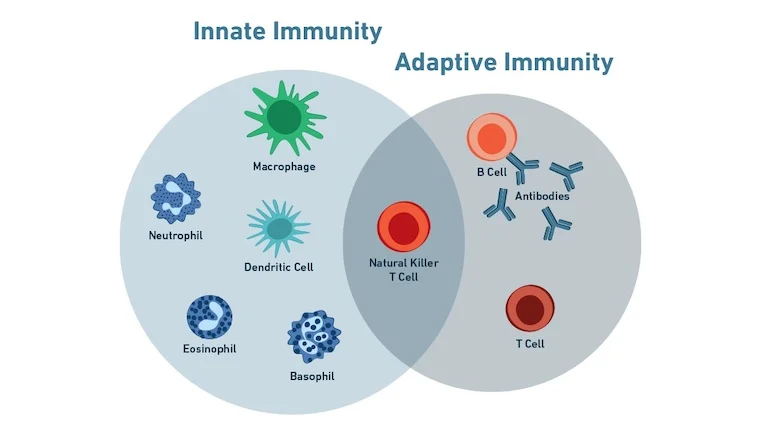As discussed in this author’s last post, the common cold (rhinovirus) was covered as well as its negative affects upon children and adults. The prevalence of cold viruses was understood to maintain their presence throughout all seasons and accounted for 40% of time lost from jobs and approximately 30% of absenteeism from school.1 Quercetin was explored as a potential intervention to help limit viral entry into cells, replication, and inflammatory cascades. In the following sections, this author will explore zinc as another means of supporting the immune system, and overall cellular function, during the common cold.
Zinc is considered an essential trace element, crucial for development, growth, and maintenance of immune system function.2 Zinc can be found in an abundance of foods to include red meat, seafood, and to a lesser extent, poultry and pork.3 Zinc is involved in a multitude of catalytic/regulator enzymes, protein folding, receptor binding, and is a co-factor in over 300 enzymes.4(94) Said trace element is part of a structure known as a zinc finger (composed of zinc, histidine, and cysteine) which regulates DNA, RNA, transcription factors, cell regulation, and signal transduction.4(94-95) Thus, insufficient levels of zinc has been associated delayed growth, skin conditions, digestive issues, delayed wound healing, increased susceptibility to infections, and compromised immune function.3(508),5

As outlined in this author’s last post, quercetin has been shown to inhibit the replication of the rhinovirus (RV) in cell and rat models. Interestingly, zinc has also been found to exhibit a similar function; said element has direct antiviral properties, and is critical in both innate and adaptive (synthesis of antibodies) immunity.2(696) Furthermore, zinc levels decrease precipitously by upregulated immune activity from infections and inflammatory conditions, suggesting its use in managing the same.6 Optimal zinc levels in the presence of a pathogen (i.e., RV) help maintain sufficient populations of CD4+ T helper cells; a constituent of the adaptive immune system responsible for stimulating/coordinating other immune cells such as natural killer cells (target and kill infected cells), macrophages (consume and digest dead cells), B lymphocytes (synthesize antibodies).6(2)

Oxidative stress is another hallmark of viral activity in host cells. Essentially, many viruses induce an oxidative state in host cells to facilitate their own survival and propagation.7 Interestingly, viruses must make several structures (proteins) inside a host cell to house (i.e., a capsid) its newly replicated genome. However, the presence of said structural/non-structural proteins produced by the virus are also responsible for inducing oxidative stress.7(2)

Optimal levels of oxidation must be maintained to support the viral lifecycle without killing the host cell. Such is achieved through down-regulating NRF2; a pathway which controls the host cell’s antioxidant (fights oxidation) genes.7(2) However, zinc (as well as quercetin) can activate NRF2 and may help control downregulation of NRF2 from viral influence.8 Zinc also has the capacity to directly act as an antioxidant; intracellularly increased zinc can overwhelm engulfed viruses and neutralize reactive oxygen species (responsible for oxidative stress).6(3) Doses up to 24 mg of zinc x 4 times a day have been used in therapeutic trials for managing common colds.11

RVs can also produce their own biochemical machinery to replicate. One key substance that RVs synthesize is RNA-dependent RNA polymerase (RDRP).9 Such an enzyme is considered one of the most versatile and deemed indispensable for propagating the viral genome.10 RDRP is essential for transcribing (copying) genetic material from RV and is the first crucial step in such a process. Interestingly, in-vitro (cell) studies indicated that zinc inhibited RDRP activity, suggesting zinc directly affects viral replication.9(322) It should be stated, however, that Nirwan and Kakkar9(322) could not elucidate how zinc inhibited RDRP activity.

In conclusion, the common cold (rhinovirus) is understood to maintain its presence throughout all seasons and accounts for 40% of time lost from jobs and approximately 30% of absenteeism from school each year. The research above suggests that sufficient levels of zinc is part of maintaining optimal cell regulation to include controlling inflammation, oxidation, viral entry, viral replication, and overall immunity. As such, zinc-rich foods and zinc supplementation, when and where indicated, is likely to help support cellular function and overall health, performance, and longevity, especially upon contraction of the common cold.
References
1. Worrall G. Common cold. Can Fam Physician. 2011;57(11):1289-1290. https://www.ncbi.nlm.nih.gov/pmc/articles/PMC3215607/. Accessed September 5, 2021.
2. Read S, Obeid S, Ahlenstiel C, et al. The role of zinc in antiviral immunity. Adv Nutr. 2019;10(4):696-710. doi:10.1093/advances/nmz013.
3. Gropper SS, Smith JL, Carr, TP. Advanced Nutrition and Human Metabolism. 7th ed. Boston, MA: Cengage Learning; 2018.
4. Lord RS, Bralley JA. Laboratory Evaluations for Integrative and Functional Medicine. 2nded. Duluth, GA: Genova Diagnostics; 2012.
5. Hemila H, Chalker E. Zinc for preventing and treating the common cold. Cochrane Database Syst Rev. 2017;9:1-11. doi:10.1002/14651858.CD012808.
6. Maywald M, Wessels I, Rink L. Zinc signals and immunity. Int J Mol Sci. 2017;18(10):1-34. doi:10.3390/ijms18102222.
7. Lee C. Therapeutic modulation of virus-induced oxidative stress via the nrf2-dependant antioxidative pathway. Oxid Med Cell Longev. 2018:1-27. doi:10.1155/2018/6208067.
8. Bousquet J, Cristol JP, Czarlewski W, et al. Nrf2-interacting nutrients and covid-19: time for research to develop adaptation strategies. Clin Transl Allergy. 2020;10(58). doi: https://doi.org/10.1186/s13601-020-00362-7.
9. Nirwan S, Kakkar R. Rhinovirus RNA polymerase: Structure, function, and inhibitors. ScienceDirect. 2019:301-331. doi:https://doi.org/10.1016/B978-0-12-815422-9.00011-5.
10. Venkataraman S, Prasad B, Selvarajan R. RNA dependent RNA polymerases: Insights from structure, function and evolution. Viruses. 2018;10(2):1-23. doi:10.3390/v10020076.
11. Rao G, Rowland K. Zinc for the common cold-not if, but when. J Fram Tract.2011;60(11):669-671. https://www.ncbi.nlm.nih.gov/pmc/articles/PMC3273967/. Accessed November 16, 2022.
-Michael McIsaac

